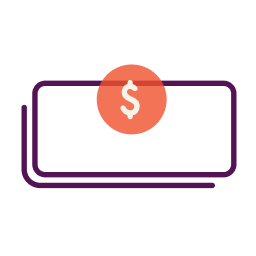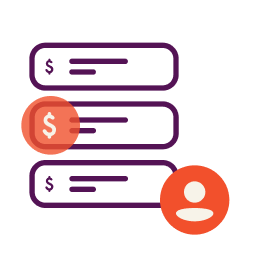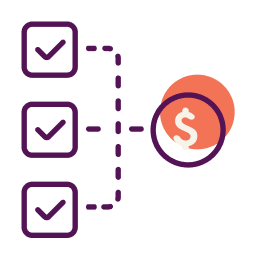There’s the saying that nothing is certain except death and taxes. And if you are a business owner, you may need to add quarterly estimated tax payments to that list of life’s certainties.
Self-employment taxes and quarterly tax payments make tax time a little more complicated for those who don’t earn a paycheck from a traditional job. Here’s what you need to know to make sure you don’t run into an expensive problem.
Brief Background on Estimated Quarterly Tax Payments
In the U.S., income taxes must be paid throughout the year. If you are an employee, your employer withholds and pays income taxes on your behalf.
But if you are self-employed, paying those taxes throughout the year becomes your responsibility. Moreover, the FICA taxes (Social Security and Medicare taxes) that are split between employer and employee fall entirely on you when you are self-employed.
In many cases, you must pay quarterly estimated taxes to the IRS to cover this liability.
As the IRS explains:
“Taxes are pay-as-you-go. This means that you need to pay most of your tax during the year, as you receive income, rather than paying at the end of the year.
There are two ways to pay tax:
- Withholding from your pay, your pension or certain government payments, such as Social Security.
- Making quarterly estimated tax payments during the year.”
You may also need to pay quarterly estimated taxes if you have a side gig or freelance while also working a traditional job.
And don’t forget about state taxes. You may also need to make quarterly estimated tax payments to your state taxing authority.
Do You Have To Pay Quarterly Taxes?
If you earn income as a 1099 contractor, you may have to make estimated tax payments. Specifically, sole proprietors, partners, and S corporation shareholders, typically must make estimated tax payments for 2023 if they:
1. Expect to owe at least $1,000 in tax for 2023, after subtracting withholding and refundable credits.
2. Expect withholding and refundable credits to be less than the smaller of:
a. 90% of the tax to be shown on their 2023 tax return, or
b. 100% of the tax shown on their 2022 tax return.
The threshold is lower for corporations: they generally must make estimated tax payments if they expect to owe $500 or more in taxes.
However, the IRS does state that you don’t have to pay estimated tax for 2023 if you were a U.S. citizen or resident alien for all of 2022 and you had no tax liability for the full 12-month 2022 tax year, either because your tax liability was $0 or because you didn’t have to file a federal income tax return.
Note that there are special rules for farmers, fishermen, and higher income taxpayers.
Why It’s Important for Small Business Owners To Make Q3 Payment on Time
When you’re an employee, taxes may be fairly invisible. Unless you carefully review your paychecks, you probably don’t even think much about taxes until it is time to file your tax return.
But those who must pay quarterly estimated tax payments should stay on top of those required payments. Failing to make the proper amount of estimated tax payments by the due date may result in a tax penalty, which means you owe even more.
This penalty is charged for each underpayment for the number of days it remains unpaid. It may apply if you didn’t pay enough estimated tax for the year, or if you don’t make the payments on time or in the required amount. You may be assessed a penalty even if you end up with a tax refund.
Calculate Your Estimated Tax Liability
The IRS provides a worksheet you can use to calculate your estimated tax liability. You’ll find it in IRS Form 1040es. It also provides an online interactive tax assistant you can use. But be warned: while the IRS says it will take 10 minutes to complete you’ll need a variety of information available, some of which may be easy to find and some may require some research. (It will time out if you don’t answer in time.)
It can get confusing, though, especially because many business owners can’t easily anticipate their income and expenses for the entire year. Income may vary; clients may pay later than anticipated; tax deductible business expenses may be higher or lower than anticipated.
Still, you have no choice but to pay quarterly estimated income taxes (if required) so you’ll need to either work with your tax professional, use tax preparation software, and/or slog through IRS forms and worksheets.
Use Prior Year Annual Tax Return as Starting Point
A good starting point for your estimated taxes will be last year’s tax return. Typically, if you pay estimated taxes throughout the year or have withholding that total at least 100% of last year’s tax due you should avoid a penalty for underpayment. (For those whose 2022 Adjusted Gross Income was more than $150,000 or $75,000 for married filing separately, that rises to 110% of last year’s tax bill.)
Factor in Anticipated Changes to Income and Deductions for Current Year
Of course, you may earn less this year than the previous year, and in that case your goal is to get as close as possible to paying 100% of what you will owe this year. This helps you avoid underpaying, and getting a large tax bill, or overpaying, which will result in a large refund that means you let the IRS hold on to your money interest-free until you get the refund. (Now that interest on savings accounts is starting to get meaningful again, that’s more costly than in recent years when interest rates were super low.)
If you earn income from a business, side gig or freelance work, it’s wise to set up accounting software and keep your bookkeeping up to date. This will help you or your accounting professional keep tabs on the taxable income for your business. It will make it a lot easier to calculate your estimated taxes.
IRS Form 1040-ES Helps Estimate Tax Liability
Again, IRS Form 1040-ES provides the official instructions and worksheet you can use to estimate your tax liability. It’s a good idea to read through it to understand your responsibility as a taxpayer.
You’ll need to estimate your adjusted gross income, which is your expected total income minus your expected adjustments to income. (Individual taxpayers typically take either the standard deduction or itemize deductions. Your business income will reflect your income minus tax deductions.)
Don’t be surprised if you find it confusing. Our tax system is complex and if you are self-employed, your taxable income isn’t likely to be as straightforward as someone who gets paid through their employer. Consult your accounting professional or CPA if you have questions.
Consider Impact of Seasonal Income Fluctuations
Taxpayers generally calculate estimated taxes for the year in one of two ways:
Estimate your annual taxes for the year and pay 25% of that amount each quarter. If your income and expenses are fairly straightforward, this shouldn’t be difficult. But if you’re like many people who pay estimated taxes due to self-employment income, chances are it’s not that straightforward.
Use the annualized method to calculate your estimated tax payments throughout the year. If your work is seasonal, for example, you may be able to use the annualized income installment method to calculate your estimated tax payments. To do this, you must use the 2023 Annualized Estimated Tax Worksheet first (Worksheet 2-7). Then if you qualify, you must file Form 2210 with your 2023 tax return.
Corporations may also use the adjusted seasonal installment method if applicable. In that case, they will use Schedule A on IRS Form 2220, pages 3 and 4, to figure out how much to pay for each required installment payment.
Determine Q3 Payment Amount
How much you will need to pay will depend on whether you are paying 25% of your annual estimated taxes for the year, or whether you use the annualized method to calculate your payments.
Again, this may be straightforward if your income and expenses are fairly steady; it becomes more complicated as those fluctuate.
In addition, if you have other income that is not subject to withholding (such as certain investment income or capital gains), you may need to also include that as you calculate your estimated tax payments.
Adjust Q3 Payment if Prior Quarter Payments Were Off
The due dates for estimated tax payments for 2023 are:
- First payment: April 18, 2023
- Second payment: June 15, 2023
- Third payment: September 15, 2023
- Fourth payment: January 16, 2024*
*Unless you have already filed your tax return and paid the full amount of tax due by this date.
Again, for Q3 quarterly estimated tax payments 2023 the due date is September 15, 2023.
If you did not pay the correct amount of tax with your first two payments, you’ll want to make sure you pay the right amount of tax for Q3. Note, though, that unless you use the annualized installment method, you can’t just decide to pay less one quarter because money is tight. You may still be assessed a penalty for underpayment of estimated taxes, even if you end up getting a refund.
Submit Your Q3 Payment
You will want to make sure you submit your payments on time and keep record of your payment. You can choose from the following payment methods:
IRS Form 1040-ES Payment Vouchers for Mailing Payment
If you prefer to pay by mail, you can use the vouchers you’ll find in IRS Form 1040-ES. You’ll find the address for mailing payments there as well. It’s recommended that you send your payment via a method that will provide you with tracking information in case there is a problem with delivery. Keep proof of that mailing where you can find it if needed.
Optional Payment Methods: Online, Phone, Mobile App
You can use the IRS App, IRS2Go, which is available through the Google Play store, the App Store for iOS, or Amazon.com. You can pay directly from your bank account, or for a fee, pay by credit card or debit card through an approved payment processor.
Set up an account through the Electronic Federal Tax Payment System (EFTPS) to make same-day payments for estimated taxes as well as other payments from your bank account.
Re-Evaluate for Final Quarterly Payment
As you approach the end of the year, it’s important to make sure you are up to date on your bookkeeping and are getting prepared for tax filing. Many businesses use a calendar year for tax purposes, so you will have some time before your tax return is due to the IRS and/or your state, but chances are you can’t file your individual income tax return without your business tax return information. The sooner you can complete this the better.
Plus you’ll need to make sure you are on track with your withholding for the year so you can either file your tax return and pay the total amount owed, or file a Q4 2023 estimated tax return if needed.
Are There Quarterly Tax Payment Penalties?
Yes there are penalties for failing to make estimated tax payments on time and/or for failing to make sufficient payments. This can get complicated. You can use the IRS forms below to calculate the penalty yourself, or let the IRS can calculate the penalty for you.
Many business owners are taxed as sole proprietorships or pass-through entities (such as LLCs) and the tax liability for their business passes through to their individual income tax returns. For those who want to calculate the penalty themselves, the form for Underpayment of Estimated Taxes by Individuals, Trusts or Estates is IRS Form 2210.
Partnerships may use IRS Form 8804 Schedule A, Penalty for Underpayment of Estimated Section 1446 Tax by Partnerships.
Corporations (including S Corporations) may use Form 2220, Underpayment of Estimated Tax by Corporations.
Make sure you check for the latest version of these forms; they are updated annually.
Ways to Avoid: Increase Withholding, Make Timely Payments
If this seems like a lot to tackle, here’s a possible workaround. Pay yourself a salary in your business and then withhold the amount of state and federal tax you estimate owing.
As long as you set up your tax withholding correctly, taxes will be withheld from your paychecks you may not need to worry about estimated tax payments. You will still need to make sure you withhold enough to meet your tax obligations, as all taxpayers must do, but it may turn out to be a lot simpler than trying to make estimated quarterly tax payments on time.
Payroll service solutions can make it easy for you to set up payroll for yourself and any employees you hire, and it doesn’t have to be complicated or difficult. You will need to make regular payroll tax payments, but payroll services will usually do this for you.
There are times when you may be able to avoid penalties. A good example is in the event of a natural disaster, where you and/or your business may be eligible for disaster relief.
Best Business Tax Software To Help Manage Your Quarterly Tax Payments
Business tax software can help make it easier to stay on top of your tax obligations as long as you keep your bookkeeping up to date. You’ll be able to track your business income and expenses, so you can then more accurately estimate your quarterly tax payments.
The type of software that’s best for your business will depend on your income and expenses, number of employees, whether you also need integrated payroll, and other factors. But whether you choose a full-service option or DIY software, make sure you take the time to acquaint yourself with the services offered to help you complete your estimated tax payments on time.
Recap: Importance of Making Q3 Estimated Payment on Time
Make sure you pay attention to quarterly tax filing deadlines and be prepared to make your payments on time. This isn’t a task you want to leave to the last minute. If you have questions, it may be hard to get the answers you need quickly. Pay late, or pay too little and you may owe an underpayment penalty.
Resources for More Information on Estimated Taxes
A good place for business tax resources is to acquaint yourself with estimated tax payment requirements is at IRS.gov, where you’ll find much more detailed information for a variety of tax scenarios, along with tax forms and instructions. In particular you may want to check out:
More detailed information can be found in IRS Publication 505: Tax Withholding and Estimated Tax
And don’t forget to check with your state taxing authority as well. You may need to make estimated tax payments at the state level as well.




Have at it! We'd love to hear from you and encourage a lively discussion among our users. Please help us keep our site clean and protect yourself. Refrain from posting overtly promotional content, and avoid disclosing personal information such as bank account or phone numbers.
Reviews Disclosure: The responses below are not provided or commissioned by the credit card, financing and service companies that appear on this site. Responses have not been reviewed, approved or otherwise endorsed by the credit card, financing and service companies and it is not their responsibility to ensure all posts and/or questions are answered.